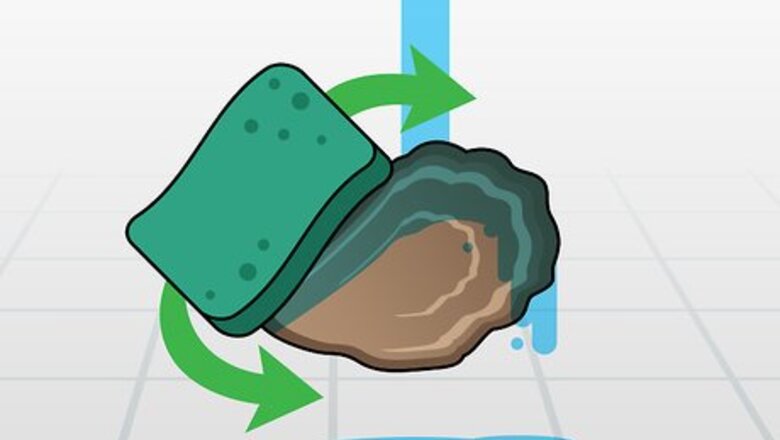
views
X
Research source
You can open oysters by shucking raw oysters, or grilling, boiling, or steaming oysters to open and cook them simultaneously.
Shucking
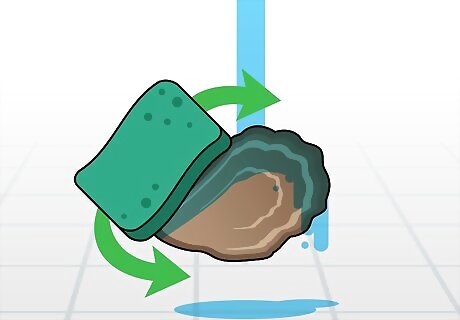
Scrub your oysters before opening them. Whenever possible, you want to scrub raw oysters under cold, running water before opening them. Use a scrubby sponge or mesh cleaner to help remove excess salt water, along with any dirt and debris that may be clinging to the shell.
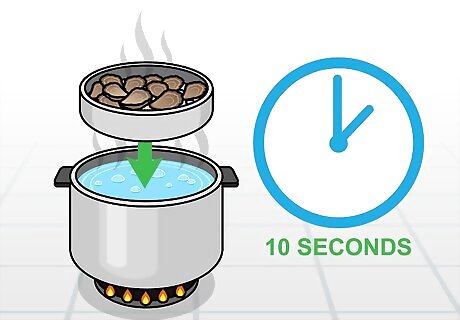
Quickly dunk your oysters in a boiling bath. Bring a pot of water to a boil. Once the water is moving quickly, throw in your oysters. Leave them there for no more than about 10 seconds. Keep them together in a net or on a steaming tray to make dunking and removing them easier.
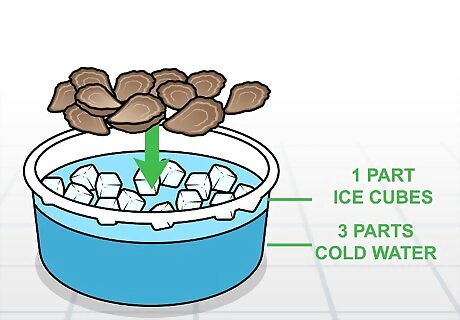
Move them directly into an ice bath. Move your oysters directly from the boiling water bath to a bath that is about 3 parts cold water and 1 part ice cubes. Those that don't open immediately will have softer adductor muscles, making them much easier to shuck. The ice bath stops the oysters from cooking. Some oysters will open right away, while others might need prying.
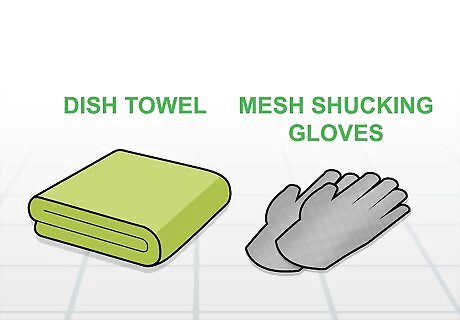
Protect your hand with a towel or glove before shucking. If you plan on shucking oysters frequently, you may want to invest in mesh shucking gloves. Otherwise, you can cover the oyster with a thick dish towel, leaving the oyster hinge exposed. Place your hand on top of the towel to hold the oyster stable. Shucking gloves are easy to find online, as well at some sports and outdoor stores.
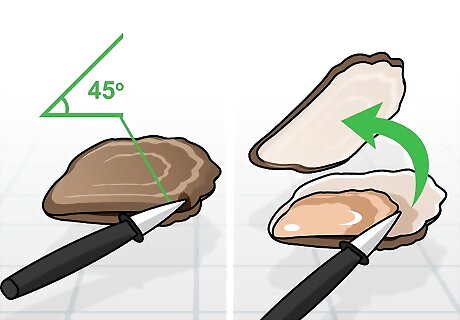
Shuck raw oysters. Place the oyster lid-up with the hinge facing you. Then look for a small gap between the lips of the shell. Work the tip of a shucking or paring knife into the shell at a 45 degree angle. Push the blade into the oyster and move it back and forth to sever the adductor. Once you feel the shell give, use your knife to gently pry the two shells apart. Keep the blade of your knife pressed against the inside of the lid. If you let it dip down into the cup, you could risk cutting the oyster meat. Once the oyster is open, slide the shucking knife under the oyster meat and gently saw back and forth to sever the lower adductor muscle. Once this gives, the meat will be completely free from the shell.
Grilling
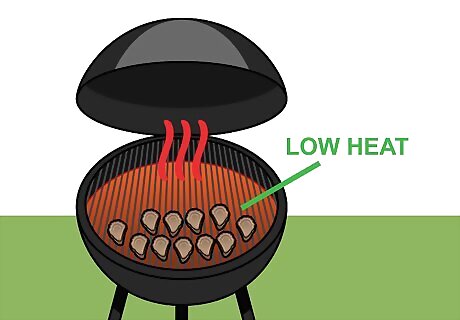
Create an low heat side on your grill. If you plan on cooking your oysters, you can use the heat of your grill to open them while they cook. Oysters can overcook quickly, so they should be placed on a low, direct heat area of the grill. If you're using a charcoal grill, this means placing the oysters on the side where you have fewer charcoal or wood bricks directly underneath. If you are working with a gas grill, light a burner and keep it on low to low-medium. Place the oysters in the area over the burner. If you hear the shells popping, the heat is too high.
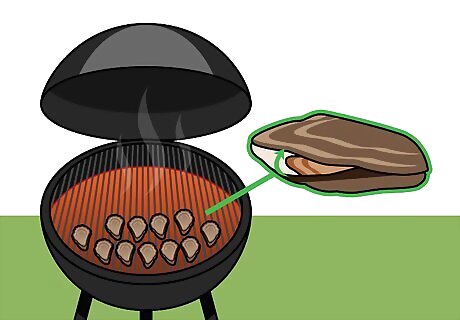
Grill the oysters until the lids open. Place your oysters lid-down on your grill's low heat area. Make sure the hinge is facing you, and the lips are facing away. Leave them there until the lids pop open. Grilled oysters are best done in small batches of around 10-20. You'll get better results cooking multiple small batches over even heat than just piling oysters onto the grill. Grilling, especially over charcoal or with wood chips, can add a slight smoky flavor to your oyster.
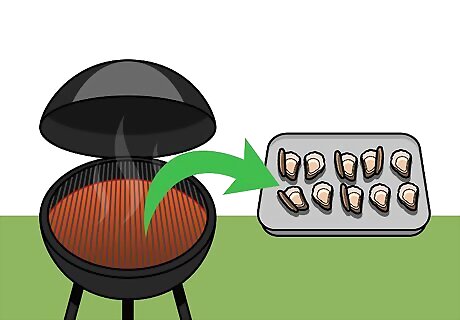
Remove oysters immediately once they open. When an oyster is done on the grill, it will typically pop open. Some oysters, though, will open partially but not completely. Move stubborn oysters to a plate or tray and use a pairing knife to gently pry open the lid. Opening cooked oysters is a much more gentle process than opening them raw. The grilling should make the lid easy to pop open. If you're struggling to open a lid, the oyster may need more time on the grill.
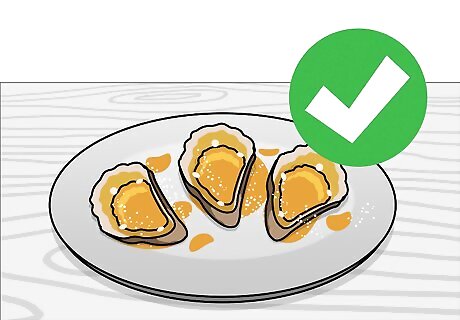
Serve immediately. Grilled oysters are at their best when they're eaten as soon as they are cool enough to handle. Drizzle on a little melted butter with garlic if you want to step up the flavor. Then, serve them up to be devoured as quick as possible.
Steaming and Boiling
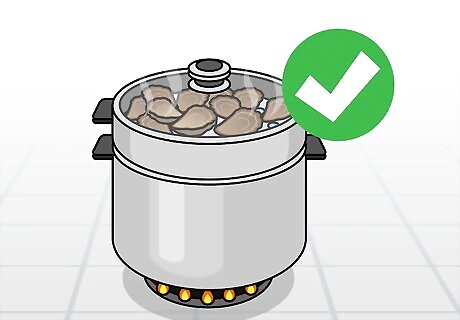
Steam oysters to preserve their flavor. You can use any steamer for oysters, whether you have a steaming tray and a pot or a whole steaming appliance. Set up your steamer and place your oysters in lid-down. Steam them on a low-medium heat until their shells open. Then, continue to steam them for 4-9 minutes after that, until they are completely cooked. Steaming doesn't preserve as much of the briny flavor as eating oysters raw, but it keeps more of it than boiling.
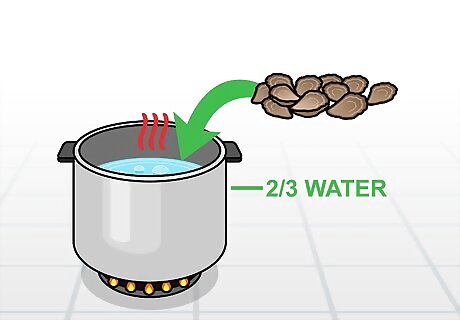
Boil oysters to impart a mild flavor. Fill a stock pot about 2/3 full with water and bring it to a boil. Put your oysters directly in the boiling water until the shells open. Once the oysters open, continue boiling them for 3-5 minutes. Try to use small pots and cook in batches when you boil oysters. Too large a pot or cooking too many at once could result in uneven cooking. Boiling your oysters doesn't impart the same smoky flavor as grilling. It does cook the oysters, though, which softens the briny taste of raw shellfish. It's a particularly good method for oysters you plan on using in other dishes, like soups.
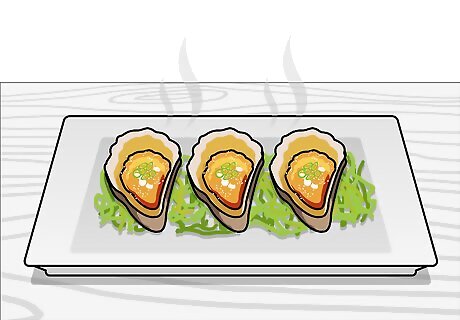
Add sauce or garnish and serve. Once the oysters are open, add your preferred sauce or garnish and serve them as soon as they are cool enough to handle. Freshly grated horseradish, melted garlic butter, or mignonette sauce are all favorites to spoon over a cooked oyster just before eating. To make a mignonette sauce, combine 120 milliliters (4.1 fl oz) of red wine vinegar with one finely chopped shallot and about 1 tablespoon (15 ml) of fresh ground black pepper. Allow these to steep together for at least an hour before serving.














Comments
0 comment